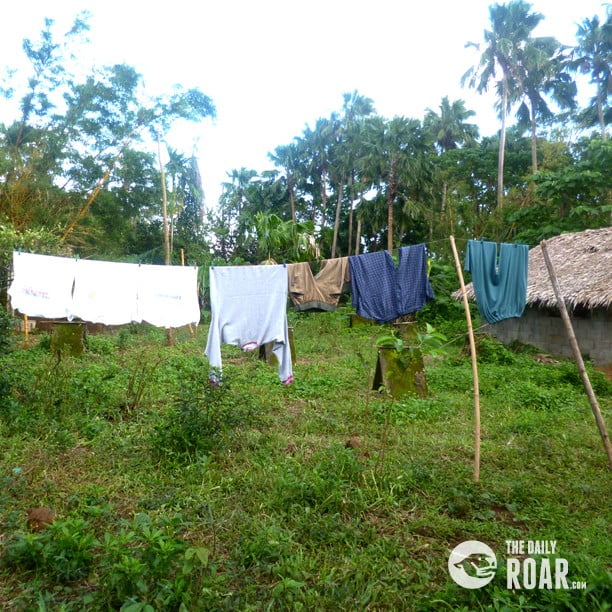Clothing is one of the basic needs of every person yet washing them can be an unpleasant task for many. Nowadays, it is very common for people to do their laundry using a washing machine with a built-in drier due to its convenience. For the more traditional types, washing clothes by hand is still preferred. If you visit the Philippines, you will find most Filipinos prefer to use the services of a ‘labandera’ (laundress) over a laundry machine. It is believed that manually removing dirt and stains from clothes is more effective. A labandera’s service starts at 500 pesos a day, depending on the weight and the type of textile used. Her services usually include ironing and folding the clean dry clothes. It is typical for a labandera to have a lot of ‘suki’ (loyal costumer) especially if they find her trustworthy and diligent.
This Filipino custom has a large impact on the country’s pop culture. TV shows usually portray provincial girls doing their laundry in the river while the men are lurking in the background to get a view. In an atypical example, the movie entitled “Hindi Pa Tapos ang Labada, Darling” (The Laundry is Not Done Yet, Darling) shows the husband doing the laundry.
The art of Labada is an intricate process mastered by a labandera. It involves the soaking, kneading, and wringing of clothes.
The following are the usual steps on how to handwash clothes:
1. Half fill the washtub with water and mix in the detergent.
2. Separate whites and colors. Always remember what clothes bleed and separate them from everything else.
3. Soak the clothes in the soapy water for about 15 minutes. Then agitate it for a bit. This will loosen up the stains.
4. Scrub the clothes one by one with a bar soap.
5. Knead the fabric.
6. Remove the stains from the clothes using a washboard and a brush.
7. Drain the dirty water and replace it with clean water and use it to wash off the excess soap in the clothing. Make sure to remove all the soap.
8. Wring the clothes to take out the excess water. Wringing of clothes should not be done vigorously to prevent damage on the fabric.
9. Lastly, hang the clothes on the line.




To the novice, washing clothes is a very arduous work and often times lead to sore and painful hands. The strong chemicals in the soap irritate the skin and causes peeling. But to a labandera, labada is a huge part of her survival.
In larger cities however, traditional laundry services are more prevalent. In Manila for example, many people use laundromats or their own washing machines. If you are visiting the Philippines but a labandera is not for you, not to worry. Most cities have plenty of laundry services available. A recently launched web app named Lavandera helps individuals find their nearest laundromat. You can find more information about them on their website: http://www.lavandera.ph/
























